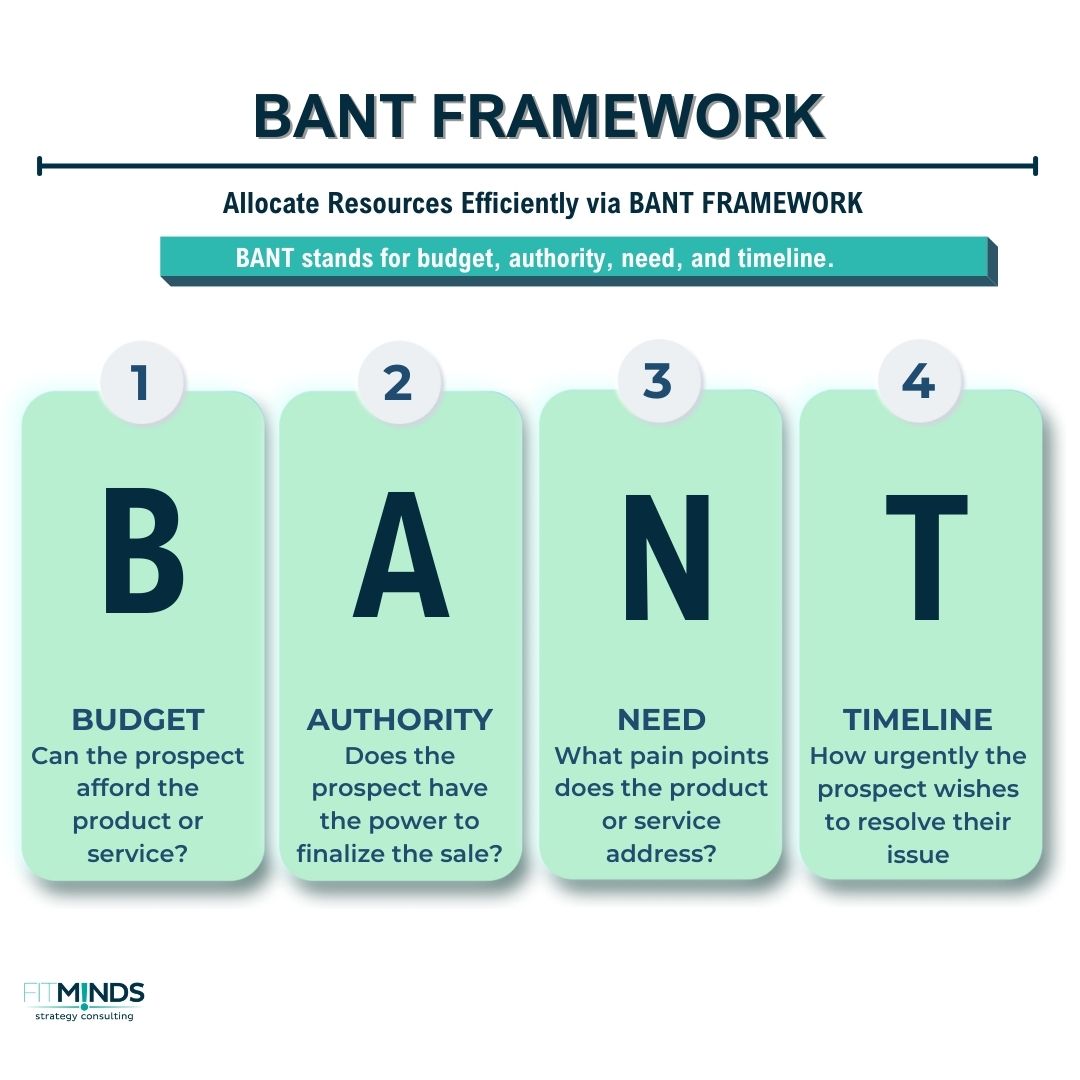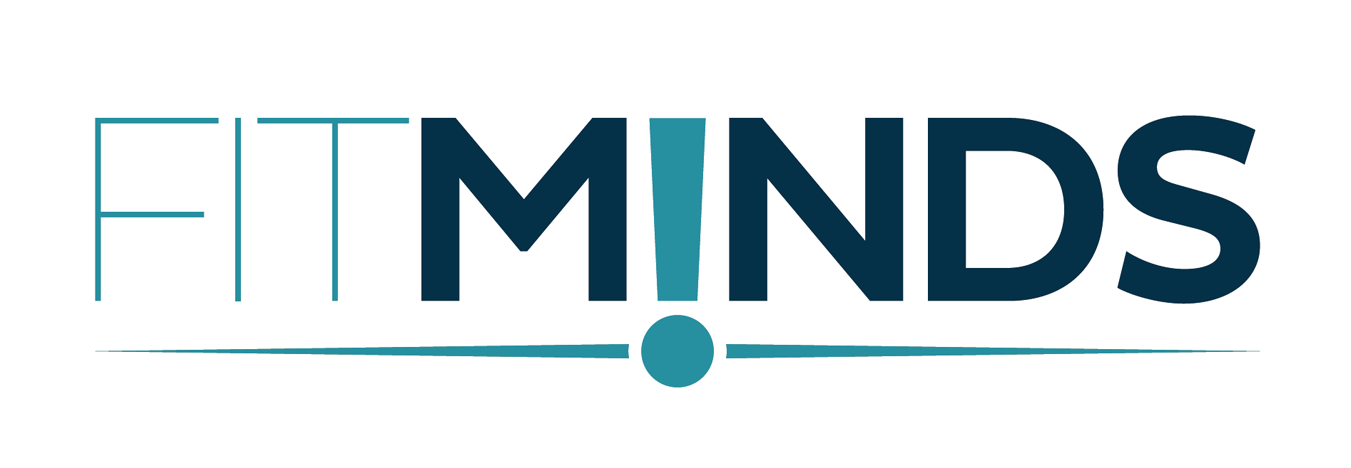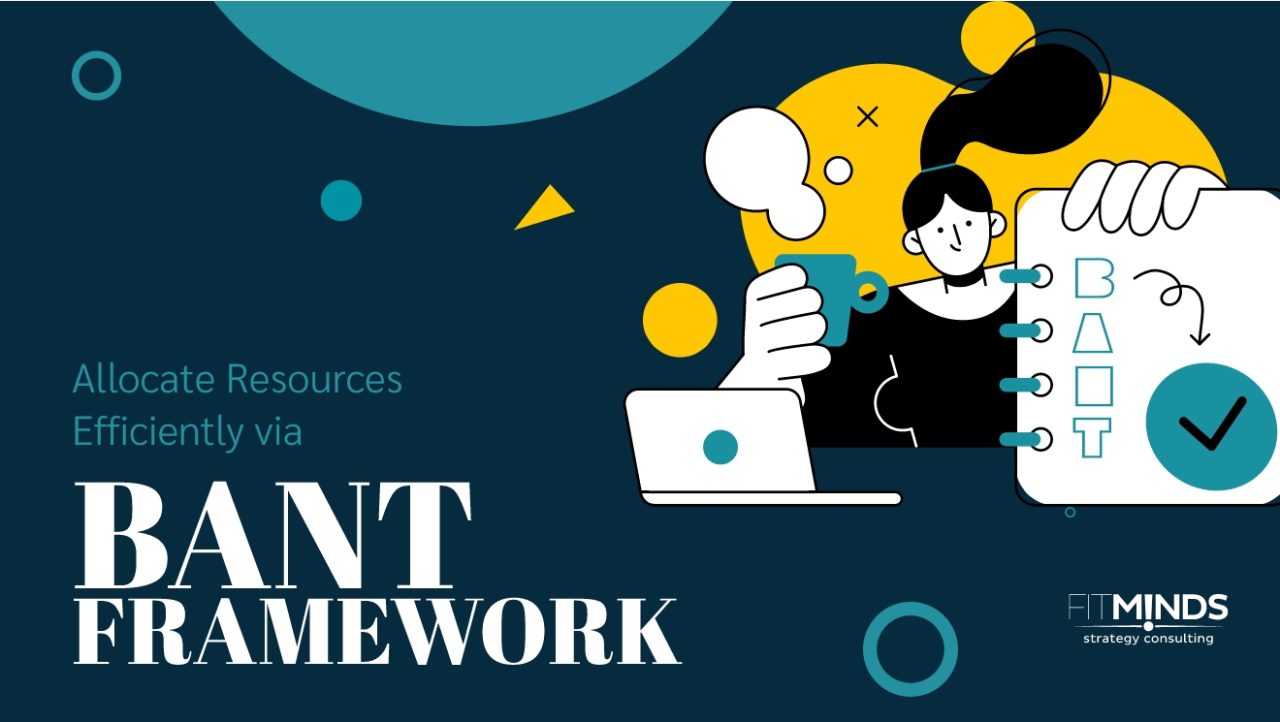The BANT framework is a sales qualification methodology to determine a prospect’s fit with the product or service. It helps sales and marketing teams quickly identify prospects most likely to make a purchase. The BANT process was created at IBM in the 1950s, focusing on four considerations: Budget, Authority, Need, and Timing.
Main Benefits of The Bant Framework
The primary objective is to nurture leads, build relationships, and ultimately convert prospects into loyal customers.
The Bant Framework helps you:
- to focus your efforts on leads that are more likely to convert into customers,
- to allocate resources more efficiently,
- to shorter sales cycles and faster revenue generation,
- to stronger customer relationships founded on trust and a deeper comprehension of their requirements,
- to provide a mechanism for consistent, long-term communication with prospects and customers.
Explanation of The Bant Framework
The BANT framework is a widely used methodology in sales and marketing, designed to evaluate and rank leads and prospects based on four essential criteria. BANT stands for budget, authority, need, and timeline.
Budget: Budget is the first criterion used to determine whether the prospect has the financial resources or budget for the company’s product. The budget plays a highly significant role in determining the prospect’s buying decision.
Authority: Authority refers to whether the prospect holds the decision-making authority to make the purchase. It’s crucial to understand who the decision-makers are in an organization to advance the purchasing process with the right people.
Need: The third factor assesses if the prospect requires or has a specific need that your product or service can effectively address. Having a deeper understanding of customer needs is crucial for the decision-making process.
Timeline: The timeline indicates how urgently the prospect wishes to resolve their issue. Understanding timelines can help reps determine which leads to address first.

By evaluating prospects against these four criteria, sales and marketing teams can measure the lead’s potential and adjust their efforts accordingly, focusing on the most promising opportunities.
The BANT framework should be customized to align with the unique requirements of your industry, product, or the specific context of your sales process. Here are the steps for utilizing the BANT (budget, authority, need, timeline) model in a sales scenario:
- Identify the prospect,
- Assess the prospect’s budget and ROI expectations,
- Identify key decision-makers and priorities,
- Understand the prospect’s specific needs, challenges, and pain points,
- Understand the prospect’s sense of urgency and determine the prospect’s timeline for making a purchase decision,
- Proactively address objections and concerns,
- Tailor your approach, create a follow-up plan for qualified leads, close the sale, and track, analyze, and adjust for improved results.
How to Apply The Bant Framework
To apply The Bant Framework to your business, FITMINDS is providing an adoption of the model that fits your company and your company’s needs. By using The Bant Framework, organizations can allocate their resources effectively.
Contact us to get more information or discover your probable personalized roadmap for The Bant Framework
Additional Tips and Readings
- You can learn more about customer experience and engagement with The AARRR Pirate Metrics.
- To optimize lead generation strategies, you can read The Marketing Funnel Model.
- You can learn more about customer decisions with the Simonson & Rosen’s Influence Mix.
- To learn more about customer behavior, you can read The Product Diffusion Curve
Contact us to nurture leads, build relationships, and ultimately convert prospects into loyal customers via The Bant Framework.



13 comments
Pingback: how to buy enclomiphene price prescription
Pingback: medicament kamagra aut rabais
Pingback: purchase androxal buy sydney
Pingback: buy flexeril cyclobenzaprine generic cheap
Pingback: buy generic dutasteride toronto
Pingback: purchase gabapentin generic australia
Pingback: generic fildena prices
Pingback: comprar staxyn en usa
Pingback: prescription itraconazole cod
Pingback: cheap avodart no prescription usa
Pingback: how to order rifaximin without prescriptions canada
Pingback: ordering xifaxan purchase from canada
Pingback: levné kamagra recepty
Comments are closed.